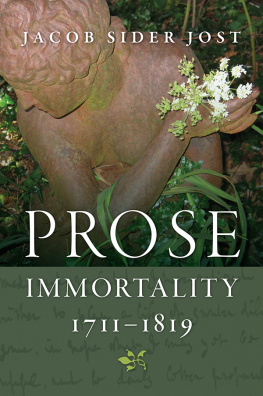Sider - Four-Dimensionalism: An Ontology of Persistence and Time
Here you can read online Sider - Four-Dimensionalism: An Ontology of Persistence and Time full text of the book (entire story) in english for free. Download pdf and epub, get meaning, cover and reviews about this ebook. year: 2010, genre: Romance novel. Description of the work, (preface) as well as reviews are available. Best literature library LitArk.com created for fans of good reading and offers a wide selection of genres:
Romance novel
Science fiction
Adventure
Detective
Science
History
Home and family
Prose
Art
Politics
Computer
Non-fiction
Religion
Business
Children
Humor
Choose a favorite category and find really read worthwhile books. Enjoy immersion in the world of imagination, feel the emotions of the characters or learn something new for yourself, make an fascinating discovery.
- Book:Four-Dimensionalism: An Ontology of Persistence and Time
- Author:
- Genre:
- Year:2010
- Rating:5 / 5
- Favourites:Add to favourites
- Your mark:
- 100
- 1
- 2
- 3
- 4
- 5
Four-Dimensionalism: An Ontology of Persistence and Time: summary, description and annotation
We offer to read an annotation, description, summary or preface (depends on what the author of the book "Four-Dimensionalism: An Ontology of Persistence and Time" wrote himself). If you haven't found the necessary information about the book — write in the comments, we will try to find it.
Sider: author's other books
Who wrote Four-Dimensionalism: An Ontology of Persistence and Time? Find out the surname, the name of the author of the book and a list of all author's works by series.
Four-Dimensionalism: An Ontology of Persistence and Time — read online for free the complete book (whole text) full work
Below is the text of the book, divided by pages. System saving the place of the last page read, allows you to conveniently read the book "Four-Dimensionalism: An Ontology of Persistence and Time" online for free, without having to search again every time where you left off. Put a bookmark, and you can go to the page where you finished reading at any time.
Font size:
Interval:
Bookmark:

FourDimensionalism defends the thesis that the material world is composed of temporal as well as spatial parts. This defense includes a novel account of persistence over time, new arguments in favour of the fourdimensional ontology, and responses to the challenges four-dimensionalism faces.
Theodore Sider pays particular attention to the philosophy of time, including a strong series of arguments against presentism, the thesis that only the present is real. Arguments offered in favour of four-dimensionalism include novel arguments based on time travel, the debate between spacetime substantivalists and relationalists, and vagueness. Also included is a comprehensive discussion of the paradoxes of coinciding material objects, and a novel resolution of those paradoxes based on temporal counterpart theory. In conclusion Sider replies to prominent objections to four-dimensionalism, including discussion of the problem of the rotating homogeneous disk.
Four-Dimensionalism is an original and highly readable study of the metaphysics of time and identity.
THEODORE SIDER
To my parents, Arbutus and Ronald

I would like to thank the following people for helpful comments: Mark Aronszajn, John G. Bennett, David Braun, Phillip Bricker, Michael Burke, Carol Cleland, Earl Conee, David Cowles, Fergus Duniho, Tim Elder, Fred Feldman, Rich Feldman, Kit Fine, 'l'ove Finnestad, Tamar Szabo Gendler, Ed Gettier, Katherine Hawley, John Hawthorne, Mark Heller, Dave Horacek, Martin Jones, Bonnie Kent, Charles Klein, Kathrin Koslicki, Brian Leftow, David Lewis, Europa Malynicz, Ned Markosian, Neil McKinnon, Trenton Merricks, Mark Moyer, Graham Oddic, Josh Parsons, Cranston Paull, Mike Rea, John Robertson, Adam Sennet, Sydney Shoemaker, Roy Sorensen, Rafael Sorkin, Gabriel IJzquiano, Brian Weatherson, Dean Zimmerman, participants in seminars by Kathrin Koslicki and Yuri Balashov, participants in my seminars at the University of Rochester and Syracuse University, and anonymous referees.
I am especially grateful to Mark Heller, Ned Markosian, Trenton Merricks, Mike Rea, Brian Weatherson, and Dean Zimmerman for extensive comments on the manuscript.
I am grateful for the permission to reproduce certain previously published material. Chapters 3 and 4 contain material originally published in the Philosophical Review, io6 (1997), 1997 Cornell University. Reprinted by permission of the publisher. Some sections of Chapter 5 are taken from an essay that appeared in the Australasian Journal of Philosophy, 74: 433-53. In Chapter 5 an extract is taken from my review of Andre Gallois's hook Occasions of Identity (Oxford: Clarendon Press, 1998), first published in the British Journal for the Philosophy of Science (5z (zoo,): 401-5).
'I'S

xi
xiii
I

I.I. Overlapping roads 6
z.i. Regions of Minkowski spacetime 44
z.z. I lybrids 3 to 5 49
z.3. Change for hybrid presentists 50
4.1. Division into spatial parts 91
4.z. Division into temporal parts 91
4.3. Relational predication 1 15
5.I. 'I'ibbles and Tib 143
5.z. Coinciding spacetime worms 153
5.3. Roads I 19o
5.4 Roads z 191
6.1. Subsequently spinning disk z3z
6.z. Subsequently stationary disk 23z

This book articulates and defends four-dimensionalism: an ontology of the material world according to which objects have temporal as well as spatial parts.
Many others have defended four-dimensionalism. This book contributes new developments of the four-dimensional ontology, new arguments in favor of that ontology, and new lines of defense against objections.
The book is also distinguished by its attention to issues in the philosophy of time and their bearing on the question of temporal parts. The philosophy of time defended is the B-theory, the so-called `tenseless theory of time'. Rival `tensed' theories of time, in particular presentism, are rejected. These issues are introduced in Chapter z, and surface sporadically throughout the rest of the book. In addition to illuminating the debate over four-dimensionalism, Chapter z can stand alone as a contribution to the philosophy of time.
The other chapters can also, for the most part, be read on their own. Chapter i is an informal introduction to the four-dimensional picture of reality. Chapter 3 explores the debate over temporal parts more deeply and formally, and connects the debate to issues in the philosophy of time. Chapter 4 begins the task of defending four-dimensionalism by setting out all but one of the arguments for temporal parts to be considered. Chapter 5 takes up the final argument for temporal parts: that they are required to solve familiar puzzles involving coinciding objects. This includes, in part, a critical survey of rival accounts of the puzzle cases, including Wiggins-style constitution analyses, mereological essentialism, mereological nihilism, and others. That chapter also defends the identification of everyday objects with instantaneous stages rather than with spacetime worms. Finally, Chapter 6 defends four-dimensionalism from objections.
I feel a bit apologetic for retaining the term `four-dimensionalism' as a name for the thesis that things have temporal parts. This is one standard usage of the term, but the term is also sometimes used (particularly in Australia) for the B-theory of time, or for the conjunction of the Btheory and the doctrine of temporal parts. The term also has the disadvantage of not wearing its meaning on its sleeve. For example, what I call four-dimensional ism implies the existence of instantaneous objects: temporal slices of spacetime worms. Since temporal slices have nonzero extension in only the three spatial dimensions, someone not familiar with the debate might expect me to be a three-dimensionalist. Despite these shortcomings, my terminology is familiar and entrenched enough to he useful, if used with care.
Font size:
Interval:
Bookmark:
Similar books «Four-Dimensionalism: An Ontology of Persistence and Time»
Look at similar books to Four-Dimensionalism: An Ontology of Persistence and Time. We have selected literature similar in name and meaning in the hope of providing readers with more options to find new, interesting, not yet read works.
Discussion, reviews of the book Four-Dimensionalism: An Ontology of Persistence and Time and just readers' own opinions. Leave your comments, write what you think about the work, its meaning or the main characters. Specify what exactly you liked and what you didn't like, and why you think so.














